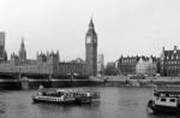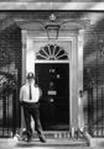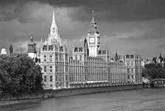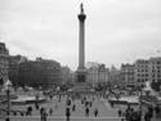Complete these sentences.
1. Britain is a constitutional ...
2. The head of state is …
3. In the other nations of the Commonwealth of which the Queen is head of State, her representative is the …
4. The Parliament consists of the …, the … and ...
5. A general election must be held every … years.
6. The minimum voting age is …
7. There are four main political parties: …, …, … and … parties.
8. The winning party forms the …
9. The second party becomes official Opposition and forms the …
10. The British constitution is not written as a … document.
The Role of the Monarchy
Monarchy is the oldest form of government in the United Kingdom.
In a monarchy, a king or queen is Head of State. The British monarchy is known as a constitutional monarchy. This means that, while The Sovereign is Head of State, the ability to make and pass legislation resides with an elected Parliament.
Although the British Sovereign no longer has a political or executive role, he or she continues to play an important part in the life of the nation.
As Head of State, The Monarch undertakes constitutional and representational duties which have developed over one thousand years of history. In addition to these State duties, The Monarch has a less formal role as 'Head of Nation'. The Sovereign acts as a focus for national identity, unity and pride; gives a sense of stability and continuity; officially recognises success and excellence; and supports the ideal of voluntary service.
In all these roles The Sovereign is supported by members of their immediate family.
1. Tick the right sentences.
1. The British Queen lives in Buckingham Palace.
2. Queen Anna lives there now.
3. Important visitors often meet the Royal family inside the Palace.
4. Tourists go to Buckingham Palace, too.
5. Tourists often meet the Queen.
6. There are always guardsmen outside the Palace.
7. The Changing of The Guard is a ceremony.
8. The Trooping of The Colour isn’t an important ceremony.
9. The Colour is a flag.
10. The State Opening of Parliament is a big ceremony.
Key: 1, 3, 4, 6, 7, 9, 10.
London
I
 London is the capital city of England and the United Kingdom situated on the Thames river, the largest city in Britain and one of the largest cities in the world.
London is the capital city of England and the United Kingdom situated on the Thames river, the largest city in Britain and one of the largest cities in the world.
 From the earliest times the Romans, the Saxons, the Danes and the Normans settled there in turn. With the passing years London continued to grow in importance and prosperity. The existence of London depended on its water-born trade which still makes London one of the world’s largest ports. Historical and geographical circumstances have turned London into one of the world’s most important commercial and cultural centres. The first mayor of London was elected in 1193, but for more than a thousand years before that London had been a place of some importance.
From the earliest times the Romans, the Saxons, the Danes and the Normans settled there in turn. With the passing years London continued to grow in importance and prosperity. The existence of London depended on its water-born trade which still makes London one of the world’s largest ports. Historical and geographical circumstances have turned London into one of the world’s most important commercial and cultural centres. The first mayor of London was elected in 1193, but for more than a thousand years before that London had been a place of some importance.

 London survived the Plague, which killed nearly 70.000 people, and the Great Fire which followed. Little damage occurred during World War I, but World War II brought tremendous destruction to the city: a great number of buildings of historic value were laid in ruins. Yet much was spared, including the Tower, St. Paul’s Cathedral and Westminster Abbey which remain the major tourist attractions of the city.
London survived the Plague, which killed nearly 70.000 people, and the Great Fire which followed. Little damage occurred during World War I, but World War II brought tremendous destruction to the city: a great number of buildings of historic value were laid in ruins. Yet much was spared, including the Tower, St. Paul’s Cathedral and Westminster Abbey which remain the major tourist attractions of the city.
London manages in a unique way to reflect the past and, at the same time, to live a life of a modern city. There is always something new to be discovered, some fresh approach to a familiar scene, some curious piece of life in the city where the old and new exist side by side in mutual tolerance and respect.
Vocabulary
the Plague [pleig] – Великая чума (эпидемия бубонной чумы в Лондоне в 1664-1665 годах, унесшая 70 000жизней при населении Англии 460 000 человек)
the Great Fire [greit´faiə(r)] – Великий пожар в Лондоне в 1666 году (уничтожил более половины города, в том числе старое здание собора Св. Павла)
prosperity - процветание
trade - торговля
circumstances ['sə:kəmstəns] - обстоятельства
to survive - выживать
damage - повреждения
to occur [ə'kə:] - происходить, случаться
tremendous [tri'mendəs] destruction - значительные разрушения
to be laid in ruins [ruin] - разрушиться, превратиться в развалины
to be spared - сохраниться
major tourist attraction - основной предмет интереса туристов
unique [ju:'ni:k] - уникальный
an approach to - подход к
mutual tolerance and respect - взаимная терпимость и уважение
II
London consists of three parts: the City of London, the West End and the East End. These are not merely geographical names.
 The City extends over an area of about 2.6 square kilometers in the heart of London. About half a million people work in the City but only less than 6000 live here. It is the financial centre of the UK with many banks, offices and Stock Exchange. But the City is also a market for goods of almost every kind, from all parts of the world.
The City extends over an area of about 2.6 square kilometers in the heart of London. About half a million people work in the City but only less than 6000 live here. It is the financial centre of the UK with many banks, offices and Stock Exchange. But the City is also a market for goods of almost every kind, from all parts of the world.
The West End consists of the fashionable houses of the rich, art galleries, famous museums, theatres, palaces and parks. Here are the historical palaces as well as the famous parks. Hyde Park with its Speaker's Corner is also here. Among other parks are Kensington Gardens, St.James's Park. In the West End is Buckingham Palace. Which is the Queen's residence, and the Palace of Westminster which is the seat of Parliament.
The best-known streets here are Whitehall with important Government offices. Downing Street, the London residence of  Prime Minister and the place where the Cabinet meets. Fleet Street where most newspapers have their offices, Harley Street where the highest paid doctors live, and some others.
Prime Minister and the place where the Cabinet meets. Fleet Street where most newspapers have their offices, Harley Street where the highest paid doctors live, and some others.

 Trafalgar Square is named so in commemoration of Nelson's great victory in the battle of Trafalgar in 1805. In the middle stands the famous Nelson Column with the statue of Nelson 170 feet high. The column stands in the geographical centre of the city. It is one of the best open air platforms for public meetings and demonstrations.
Trafalgar Square is named so in commemoration of Nelson's great victory in the battle of Trafalgar in 1805. In the middle stands the famous Nelson Column with the statue of Nelson 170 feet high. The column stands in the geographical centre of the city. It is one of the best open air platforms for public meetings and demonstrations.
One of the "musts" for the sightseer are the Houses of Parliament, facing the Thames, on one side, and Parliament Square and Westminster Abbey, on the other. The House of Commons sits to the side of the Clock Tower (Big Ben), the House of Lords - to the Victoria Tower side.
Westminster Abbey is the crowning and burial place of British monarchs. It has its world famed Poet's Corner with memorials to Chaucer, Shakespeare, Milton, the Bronte's sisters. Tennyson. Longfellow, Wordsworth, Burns, Dickens, Thackeray, Hardy, Kipling and other leading writers. Only a few however, are actually buried there.
The name "West End" came to be associated with wealth, luxury, and goods of high quality. It is the area of the largest department stores, cinemas and hotels. There are about 40 theatres, several concert halls, many museums including the British Museum, and the best art galleries.
The Port of London is to the east of the City. Here today are kilometres and kilometres of docks, and the great industrial areas that depend upon shipping. The East End is still a poorer district full of factories and plants; it is a district were poorer people live too, though it can no longer be called a district of the poor as housing conditions have improved. This is the East End of London, unattractive in appearance, but very important to the country's commerce.
 London is always full of life. The streets are crowded with traffic. High ‘double-decker’ buses rise above the smaller cars and vans. The city of London today is the financial powerhouse of the country and one of the chief commercial centers of the western world. The city has its own Lord Major, its own Government and its own police force. Here the medieval buildings stand side by side with modern glass high-rise offices.
London is always full of life. The streets are crowded with traffic. High ‘double-decker’ buses rise above the smaller cars and vans. The city of London today is the financial powerhouse of the country and one of the chief commercial centers of the western world. The city has its own Lord Major, its own Government and its own police force. Here the medieval buildings stand side by side with modern glass high-rise offices.
Vocabulary
merely ['mɪəlɪ] – только
Stock Exchange ['stɔkiks¸ʧeinʤ] – Лондонская фондовая биржа
in commemoration of [kəmemə'reiʃ(ə)n] – в память о ком-л, чем-л.
sightseer ['sait¸siə] – турист, осматривающий достопримечательности
bury - хоронить
‘double-decker’ bus – двухэтажный автобус (в Лондоне красный), букв. Двухпалубный
1. Answer the questions:
1) What is the capital of Great Britain?
2) Is London a big city?
3) What river does London stand on?
4) What parts is London divided into?
5) Why is the City called the business centre of London?
6) What is the West End famous for?
7) Why is the central square in London named Trafalgar Square?
2. Complete the text using the given words:
1) London is the ____ of Great Britain, its political, economic and commercial centre.
2) It is one of the largest cities in the world and the largest city in ____.
3) Its ____ is about 8 million.
4) London is situated on the river ____.
5) The city is very old. It has more than 20 ____ old history.
6) Traditionally it is ____ into several parts: the City, the West End and the East End.
7) ____ is the oldest part of London, its financial and business centre. Numerous banks, offices and firms are concentrated here.
8) ____ is the richest and most beautiful part of London. The best hotels, restaurants, shops, clubs, parks and houses are situated there.
9) ____ is an industrial district of London. The old port area is now called "Docklands". There are now new office buildings in Docklands, and thousands of new flats and houses.
10) London has rather wide streets but low houses. It looks very grey because there is so much _____ and ____ there. Only ____ are red.